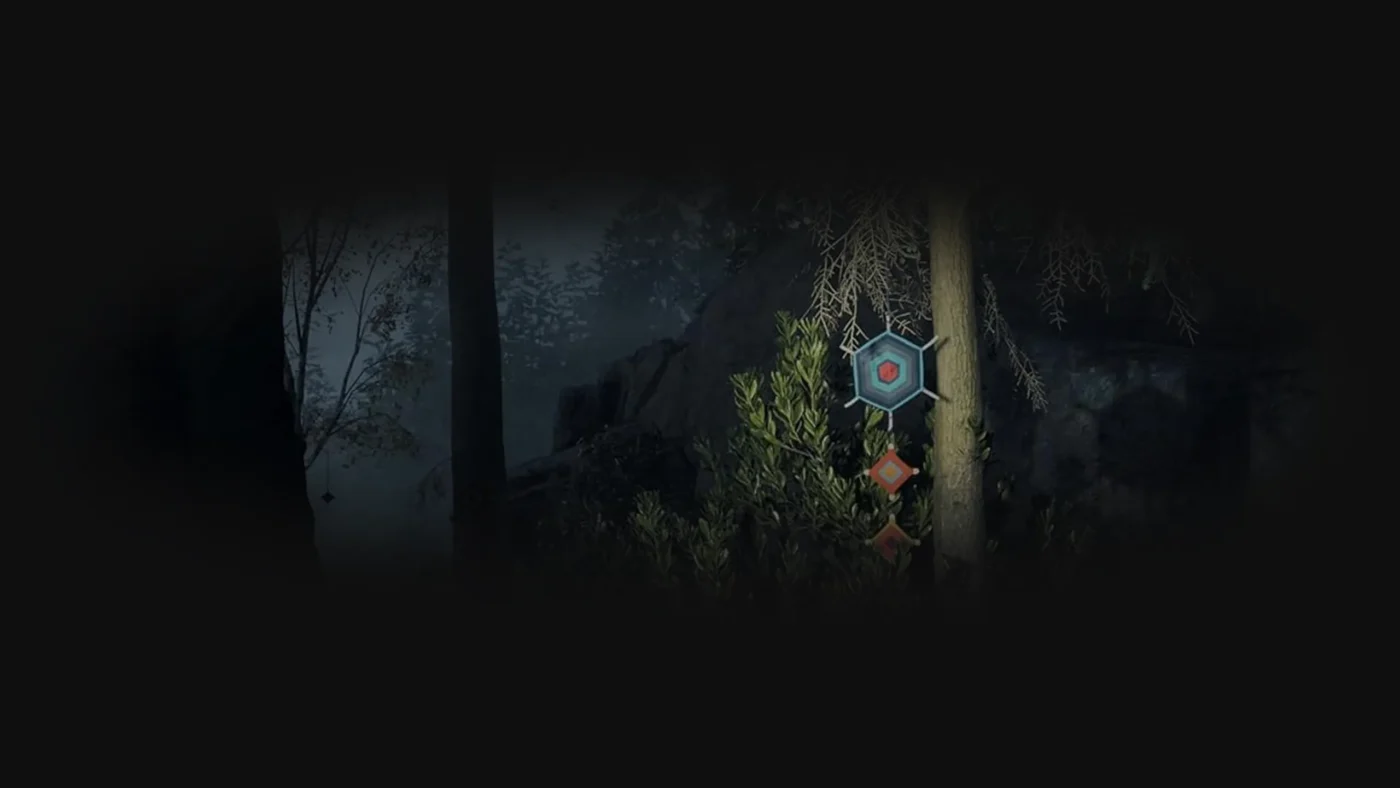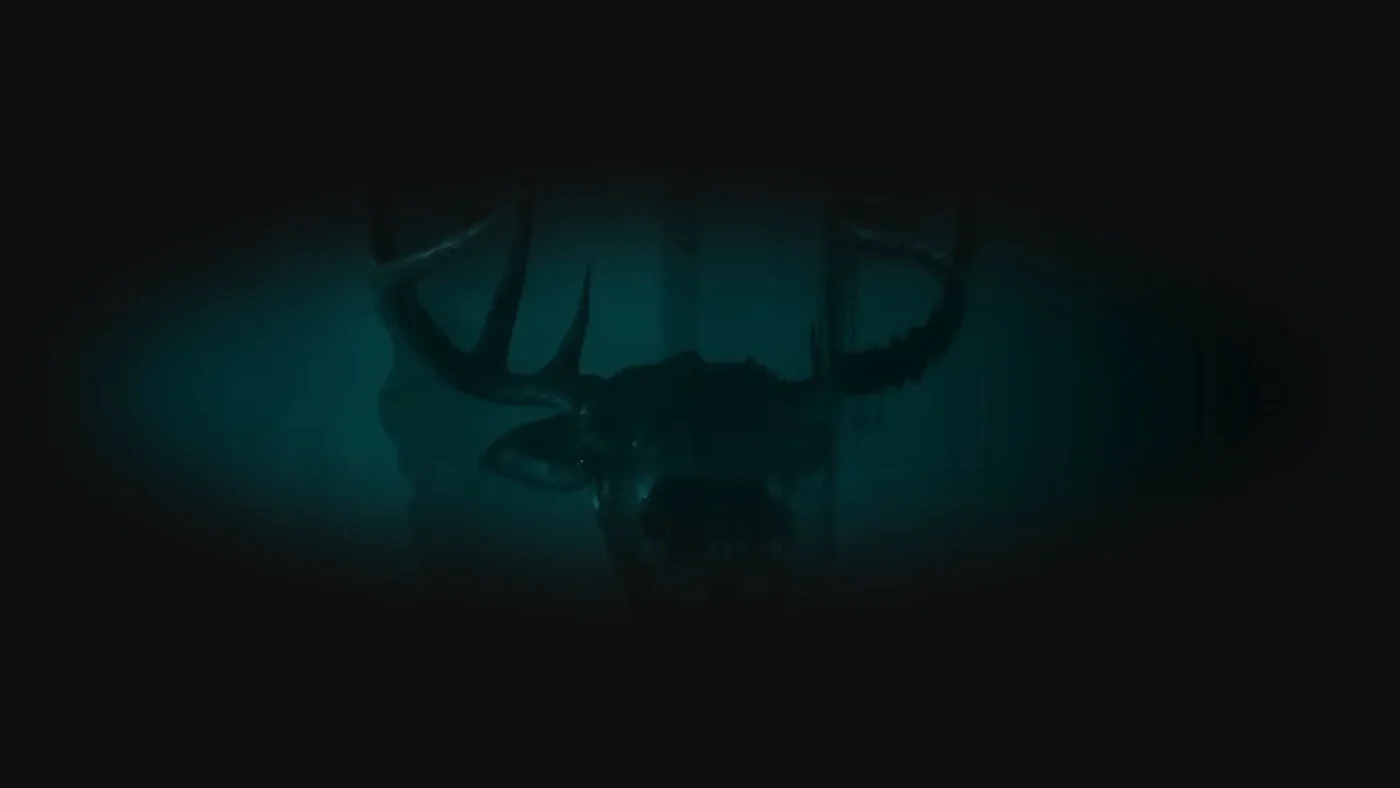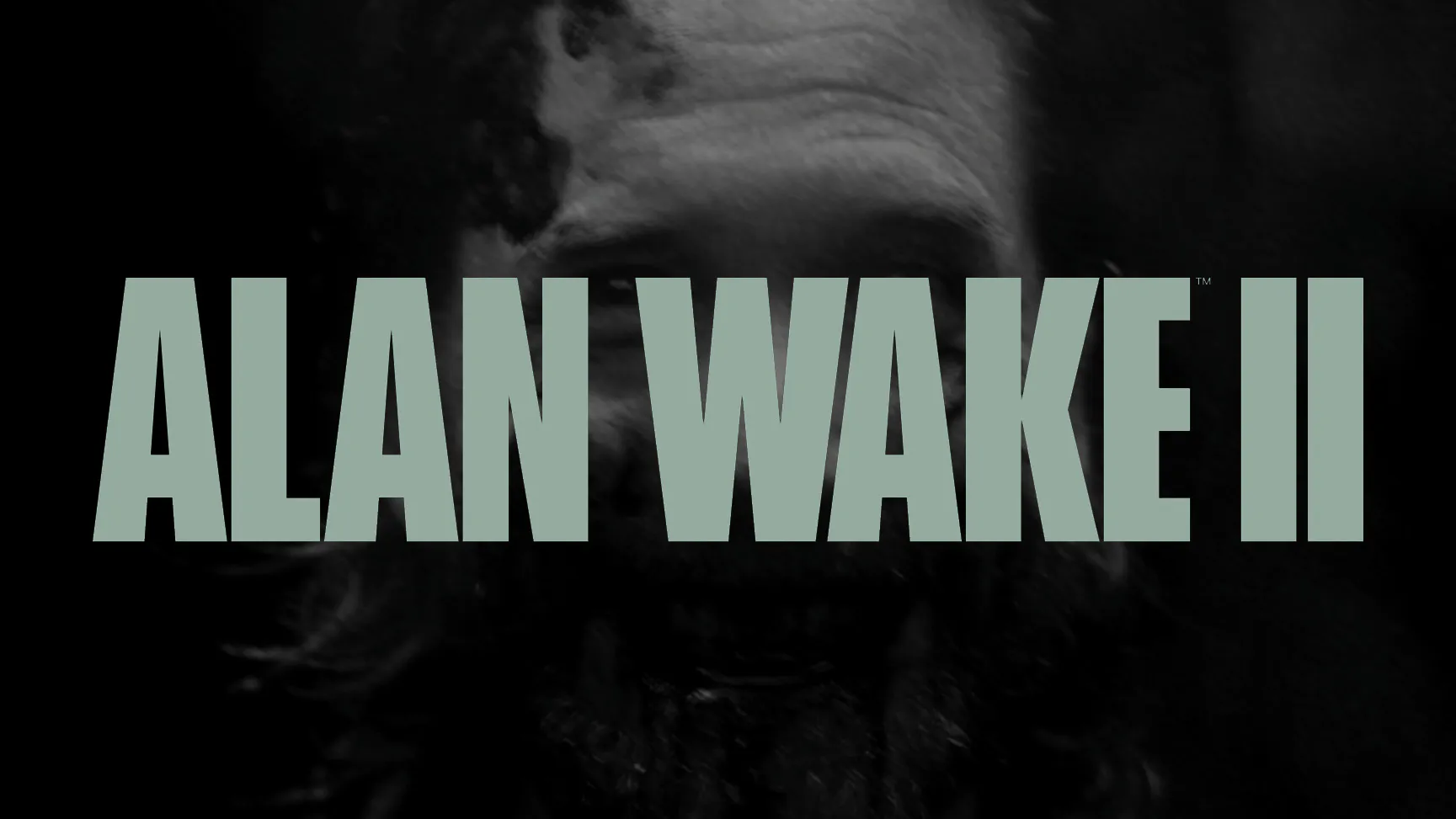Why Alan Wake 2 is One of the Best Video Games I’ve Ever Played
A haunted story spiral where tech, theatre, and horror sing in unison.

A haunted story spiral where tech, theatre, and horror sing in unison.
Alan Wake 2 is Remedy mastering everything they’ve learned about mood, myth, and meta. It’s also the rare horror game that speaks my language: evil doubles and reflections, unknown imminent dangers lurking at every corner, mysteries whispered in fluorescent light, and a writer who cuts into reality with words.
This is one of the few games that brought back that primal, childhood feeling of discovering something new – at least artistically – and it made me feel great: curious, awed and a little frightened. Few games trigger this exact emotion, and when they do, I usually dive in, study them, and prepare a report worth reading for you guys. If you grew up not being afraid of the dark, but embracing it, exploring shadows and radio static like I did, this one will feel… personal. Let’s jump into it. None of the links in this page are sponsored. All visuals are Remedy Entertainment’s work.
Alan Wake 2 is available on:
About Remedy.
1.1) Remedy Entertainment – A history
Finnish studio, 1995. Demoscene roots. Death Rally. Then Max Payne debuts bullet-time noir, with creative director Sam Lake’s own face modeling Payne in the 2001 original – a budget hack that became a legend. Max Payne won the BAFTA Interactive Entertainment Award for Best Game (PC) and the Golden Joystick Award for Best PC Game in 2001.
– Get Death Rally Classic on Steam (free)🔗
– Get Max Payne on Steam🔗
Photos: Max Payne (2001), Sam Lake (around 2020), Alex Casey (Alan Wake 2). Source: Shacknews🔗. Death Rally (classic, Remedy Entertainment).
1.2) A genius live-action mixing
We can’t talk Remedy without mentioning live-action/surreal signature. The mix starts early (in-world TV shows like Address Unknown and Lords & Ladies in Max Payne), then graduates to outright film: the Bright Falls live-action miniseries preludes Alan Wake; Quantum Break stitches full TV episodes into play; Control weaponizes Dr. Darling’s VHS-lab monologues and Zachariah Trench’s whispers.
Finally, Alan Wake 2 brings actors onstage inside the game’s dream logic, taking the vibe to the next level.
It’s an artistic signature that blends beautifully with the surreal spectacle and style of narration. I grew up with them, and I love them so much.

Address Unknown – a TV show seen in Max Payne 2. The doppelganger and mirrors origins are here (2003).

James McCaffrey starring Zachariah Trench in Control (2019).
Remedy loves motifs:
– There’s always a subway. Subway platforms in the Dark Place mirror Max Payne’s tunnels;
– Control’s liminal Oceanview Motel reappears as Oceanview Hotel in the Dark Place (with the latter being so much more evil);
– The doppelganger thread runs from Address Unknown’s John Mirra through Max Payne all the way to Mr. Scratch;
– Room 665 is present in both the Oceanview Hotel and Max Payne 2’s apartment block or the password to the safe in Max Payne 1 (The Neighbor of the Beast). Also present in Control.
1.3) Humans
Remedy blurs the line between roles and realities by reusing its actors across games. We’ve talked about Sam Lake’s face as Max Payne.
Then came James McCaffrey, the unfortunately late, irreplaceable voice of Max Payne, returned in his final act, as Alex Casey in Alan Wake 2.
Matthew Porretta and Ilkka Villi together embody Alan Wake himself, with Porretta’s voice and Villi’s likeness and live acting. Martti Suosalo, who gave us the unforgettable janitor Ahti in Control. Courtney Hope, Jesse Faden in Control, first appeared in Quantum Break, while Shawn Ashmore, Jack Joyce in Quantum Break, reemerges here as Tim Breaker. Faces and voices echo across the Remedyverse, making casting itself part of the story’s meta-design.
Control (2019) is where Remedy proved the lab can be the stage. The evershifting Ashtray Maze turned level design into choreography, powered by Old Gods of Asgard’s “Take Control,” (the only way to escape the maze is to listen to the song while passing through – genius!). Remembering the Board’s otherwordly modulated voice, resulting in yet another amazing feat of sound design, and the Oceanview Motel which is a threshold in space – teleportation, resulting in three of gaming’s great moments, all in one game. Winner of over 80 awards.
– Get Control on Steam🔗
Screenshots: Control in-game photos: Ashtray Maze, the Oceanview Motel, and last but not least, the Board – an otherwordly being briefing the director of the FBC. I’ll let you look about what’s going on here if you’re really interested. Trust me, it’s mental.
3.1) Alan Wake – a short spoilerless intro
Let’s go back to Alan Wake because I’m losing focus, as Control is so good, it needs its own article. Launched in 2010 as an Xbox 360 exclusive, Alan Wake set the tone: a best-selling novelist, a missing wife, a Pacific Northwest town – Bright Falls, and a ruleset where light is a weapon – of course, horror-themed. You’re the novelist, Alan Wake.
He starts picking up manuscript pages from a book he doesn’t remember writing while the world around him starts behaving strangely similar to what’s written on the pages. Fiction, becoming reality – a clean, genius hook that made the game a cult fixture and an awards magnet (e.g., TIME’s Best Video Game of 2010, plus multiple narrative/atmosphere nods). A PC port followed in 2012, with a multi-platform Remastered years later.
You HAVE to play it. The atmosphere and general vibe set by Remedy is amazing, especially if you’re a fan of weird, thriller-horror, and atmospheric shows like Twin Peaks.
– Buy Alan Wake Remastered from Epic Games Store🔗
Gallery: Alan Wake 1 and American Nightmare DLC.
3.2) The doppelganger
Many episodes and a whole horror story later, comes the doppelganger thread. Alan Wake’s American Nightmare (2012) sharpened rumor into a person (a doppelganger, to be exact): Mr. Scratch, the taunting double of Alan Wake who wears his face and grins menacingly.
He isn’t some monster outside the cabin door, nooope, he’s the evil but better version of you who dresses sharper and answers every dark urge you’ve ever buried. He knows your memories because they’re his; he mocks you with your own voice. Mr. Scratch isn’t only out there to kill you. He wants to outperform you, to overwrite you, until you vanish and he’s the only author left on the page. For me, that’s incredibly terrifying.

In American Nightmare, Mr. Scratch taunts Alan with videotapes, gloating about taking his life, his wife, and his identity.
In Alan Wake 2, Mr. Scratch returns multiplied – darker, crueler, more relentless than before. He’s the twisted lighthouse that promises only one thing: sooner or later, the shadow wins. I can’t even describe the terror I felt when first encountering him in the chapter that bears his name. Damn.
Gallery: Mr. Scratch’s evolution – from Alan Wake’s American Nightmare, to Scratch from Alan Wake 2 – (AW2 collage by Screenrant🔗).
Remedy signed with Epic Games Publishing on terms that protect the art: full funding for dev + go-to-market, IP ownership retained, and 50/50 profit share after recoup. On 27 October 2023, the PC version launched Epic Games Store-only and consoles with “No” to a physical PC/console release. Physical Deluxe (22 Oct, 2024) and Collector’s (Dec 2024) followed. By end of 2024, the game exceeded 2M units and recouped development and marketing costs, so Remedy began getting royalties.
A slower burn than its cultural impact suggests, but still a commercial success. That’s the reality. The noise? Certain “content-farm” YouTube channels tried to spin woke-related headlines like “Remedy CEO not happy / Sweet Baby Inc. ruined profits” into clickbait, reducing nuanced financial reports into outrage fodder. The actual reports🔗 were about short-term recoup timing and platform strategy. Remedy themselves never said “not profitable”; they said it was a long-tail performer. Important difference.
– I should add here that the steep PC requirements might have done something with it, maybe piracy as well (launching without Denuvo protection).
Translating the transmission: the Epic Games Store-only PC and digital-first console release likely softened day-one reach, but the deal structure de-risked the creative swing and paid off on the long tail. I still see people saying “I ain’t buying this ’til they release it on Steam.” – well, my child, keep waiting. Also, I’m not one to say this often but, if that’s the reason you’re not getting to experience it, you’re missing out on a lot.
A really short paragraph, to properly close Stage Case Casey. When I hear “Connected Universe” my mind immediately binds to Marvel’s cash cow, and it kind of breaks the vibe for me. In any case, it’s clear, Sam Lake publicly stated that the surreal worlds are connected. Alan Wake and Control (and echoes from Quantum Break) share a web of ideas and institutions; Alan Wake 2 stops hinting and starts using that network. You can play AW2 cold, but the interaction is the point.

About Remedy’s Connected Universe. Warning: Spoilers.
End of Part One: Stage Case Casey. Stay tuned for Part Two: Mirror Case Casey – only Alan Wake 2 (spoiler-light): mind rooms, Noir York, Bright Falls, “Herald of Darkness,” Northlight engine at its finest, and a legendary soundscape.

This is the ritual,
to lead you on.
Only Alan Wake 2 from here on out. Spoiler-light: I describe systems, locations, and vibes; no late-game reveals.
1.1) Two leads, two realities
Good thing I saved a doc of these ideas – I got psyched and had to boot up AW2 again. Alright, we’re knee-deep in the lake now, prelude and paperwork done.
Alan Wake 2 introduces Saga Anderson (Melanie Liburd), an FBI agent dispatched to Bright Falls to solve the murders and missing persons cases, along with her partner Alex Casey, thirteen years after the first game’s events. You alternate between Saga and Alan – your choice how many chapters you want to play with each. Two leads, two realities. Saga works the case in the real world, while Alan Wake is trying to escape the Dark Place, where stage lights and typography are survival gear.
Photos: Two leads, a spiral. In-game collage: Gamerant🔗.
1.2) How thinking becomes play
Both Saga and Alan get a mind room. They’re not menus, they’re spaces in-game:
– Saga’s Mind Place is taken literally and is represented as a Bright Falls cabin-room, a hub you can interact with. You pin clues to a caseboard, profile suspects, reread manuscript fragments
– Alan’s Writer Room is the mirror version – you rewrite the scene to force the nightmare reality to comply, then seamlessly step into it.
Neither pauses the game. Enemies can still stalk while you’re “thinking,” which means you choose moments carefully.
In-game videos: Saga Anderson’s Mind Place getting interrupted and Alan Wake’s Writer Room being used to navigate the Oceanview Hotel.
1.3) Thriller Party
Influences? Sure, Stephen King novels, Twin Peaks, Silence of the Lambs interrogation grammar, Sam Lake even pointed to True Detective‘s ritualistic crime scenes. But the mix is unmistakably Remedy: dream-logic stitched together with metafiction and haunted storytellers. On a gut level, you can feel ~40% detective, ~60% survivor, and 100% convinced that the Dark Place – or the evil spilling into Bright Falls – is watching you as closely as you’re watching it. This is the kind of horror I grew up on: doubles, liminal rooms, evil interdimensional rules – Room 1408, anyone?
Screenshots: Between Bright Falls and the Dark Place lies only a thin overlap, and it has already been crossed.
1.4) Story DLCs
Alan Wake 2 launched two story expansions Night Springs and The Lake House, both continuing Remedy’s tradition of twisting side-lore into playable episodes, with hints to future games, twisted timelines, violence, and many, many surprises. Great additions to the original game – I wish they were longer.
Photos: Night Springs – A multiversal fever dream and The Lake House – A prequel.
2.1) An Endless Nightmare
Remedy’s signature “mixed-media” is all over it: live-action outerdimensional gibberish (at first), with faces half in shadow, asking for a replay if you didn’t understand or catch the glimpse. A house special since Max Payne, but here it’s a surreal aesthetic dressed as gameplay mechanic. In the Dark Place, every transition hums with dream logic, pulling you sideways instead of forward, as if you’re really there, in a nightmare where nothing makes sense.
In the videos below you’ll be able to see (spoiler-free) what I’m talking about. You go in a specific direction, The Dark Place cleverly sends you back where you started. Your only tools to navigate the Dark Place – a revolver, a trusty flashlight and the Angel Lamp – another important piece of the puzzle.
– With the Angel Lamp (an Object of Power🔗, no doubt) you can absorb nearby light sources. They get stocked up. They can then be used on an environment with a flickering light in order to change it in a drastic way, such as opening up a path forward.
– With the mixed-media specks of alternate reality, Alan gets ideas about what to write next, to fold the reality to his advantage.
In-game video: Listening to a dream story from another dimension, in an onion-styled overlap. Alan uses them to get writing ideas, to bend the Dark Place into opening new paths.
The mixed-media goes further than cameos – there’s a full in-game short film (with real actors), Yoton Yo (Nightless Night), a folk-horror detour screening inside a Dark Place cinema. It’s in Finnish (Suomi), with subtitles. It’s entirely optional – easy to miss or skip – which is very Remedy: trusting the player to discover the weird. You can watch the whole thing here🔗.
2.2) The Dark Place
In Alan Wake 2, the Dark Place wears a trench coat and calls itself New York. Streets are rain-slicked, neon lights bleed into puddles, and chaos flickers like signage that won’t stay off. Remedy frames it as a living labyrinth: Noir York City. Shadow figures drift in alleyways, subway tunnels loop back into themselves, the Oceanview Hotel anchors like a malign, evil heart, and Parliament Tower looms as a false beacon of safety.
Alan Wake‘s goal is simple: escape. Important findings will lead him to backtrack and pursue, heading deeper into the nightmare. He rewrites signs, opens paths, dodges the Dark Presence. But the real antagonist is the city itself: an alley that spits you onto a rooftop, a supposed shortcut that leads you back where you started. Remedy taps into primal fears and nails the feeling of being inside a bad dream: Dazed, confused, scared, cold.
In-game video: Every path a trap, every door a question.
All of this unfolds while Scratch grins from the margins – the doppelganger Alan can’t shake – and while shadow-cloaked figures patrol the periphery of the outerdimensional plane.
Suddenly, a moment of uncanny calm: a public payphone begins ringing. Alan answers, the voice on the other end talking gibberish. You won’t be sure you understand, and that’s the point. The camera shifts angles, showing Noir York behind him – neon blinking red, traffic lights frozen on stop, trees arrested mid-autumn, debris choking the asphalt. A thin rain drizzles down – the one that doesn’t refresh, but chills.
Even the weather feels wrong – like time has stalled, waiting for you to make the wrong move.
In-game video: Private caller.
2.3) Words, Upgrades
Alan’s route hides Words of Power – glowing glyphs that unlock perk trees (weapon potency, resource finds, map intel). It’s pure Remedy poetry: the right word literally makes you stronger. Meanwhile, resource tension (batteries, flares, trauma packs) keeps both campaigns tight; you feel every choice.
In-game screenshots: Alan Wake finding a hidden “Word of Lamp” and the Words of Power drawer, unlocking enhancements while inside the Dark Place.
3.1) Return to Bright Falls
Switch to Saga Anderson and the game exhales into the Pacific Northwest. The air is sharp with pine and damp asphalt, the kind of small-town quiet that makes you listen harder. It is quaint and beautiful as it is dangerous. Bright Falls is motels with humming fridges, small-family businesses, and roads that always feel one bend away from fog.
Screenshots: Between Bright Falls and the Dark Place lies only a thin overlap, and it has already been crossed.
3.2) Cauldron Lake & Watery
From the overlook, Cauldron Lake looks mirror-still – just a caldera bowl near Bright Falls – but it sits on a thin spot in reality, and the cedar-dense trails make noon feel like dusk.
Downriver, Watery keeps the postcard energy – Finnish-founded fishing/logging town turned tourist stop (Coffee World amusement park, Moosefest – Deerfest competition) – until fog slides in and the docks start whispering; it’s cozy right up to the moment it isn’t. As you range out, previously flooded paths open later and side routes reveal themselves, which only deepens that “beautiful but watch your corners” feeling.
As Saga, you are free to roam Bright Falls, Cauldron Lake and Watery – resulting in one of the most immersive experiences in gaming.
Screenshots: Cauldron Lake and Watery are waiting for you to discover them.
3.3) The Supporting Cast (some of it)
Tor & Odin Anderson (Old Gods of Asgard). Aging local rock legends who talk like prophets. Their presence turns small-town chatter into omen – with lyrics and tales that feel like warnings. They’ve been Bright Falls fixtures since the first case, and in AW2 their role is well defined and as important as they were in the first game (The Poet and the Muse) still steal scenes even though they rest in Valhalla Nursing Home. Scroll below where we’ll talk about the sound design to read more about them.
Alex Casey. Saga’s partner, a flinty FBI detective with Sam Lake’s face and the late James McCaffrey’s voice. Pure noir cadence – reminds you of… Max Payne? Rockstar owns the rights; here he’s Alex Casey – the Real Casey, not the one from the Alex Casey books (what’s real anymore anyway…). He works as Saga’s cold-voiced conscience and a pressure valve for the case, an homage with teeth rather than a cameo with a hat.
Ilmo & Jaakko Koskela. Twin entrepreneurs from Watery, who keep the region’s kitsch heartbeat going with ventures like Coffee World, Ahma Beer, Kalevala Knights Workshop, Watery Lighthouse Trailer Park… and more. The in-game TV ads (there are six to find) are corny on purpose, doubling as comic relief and breadcrumbs about the towns’ tourist mask and the strangeness. They feel goofy at first, but they get more and more serious as the plot thickens. Both are played by the same actor, Peter Franzén – an amazing performance.
3.4) Gunplay & Survival
Deliberate, same as Alan’s Route: burn shadows with your flashlight boost, line up the shot, count your bullets like a prayer. Break Rooms – thermos coffee steaming under warm light – pause the journey, giving a rhythm of safety before you step back into the dark.
In-game video: Cat and mouse with a “Splitter Taken”.
3.5) Nursery Rhymes & Alex Casey Lunchboxes
Bright Falls hides its secrets in plain sight. Nursery Rhymes look like chalk scribbles on the ground, eerie little setups with dolls, toy cars, or props placed just so. Solve them by arranging the items according to the verse, and the rhyme turns real. Can reveal both enemies & rewards.
In-game screenshots: Together, they blur the line between innocence and ritual.
Then there are Alex Casey Lunchboxes (from the books, not the “real” FBI agent) scattered through the woods and inside buildings. Used to upgrade your arsenal.

We write into darkness,
and the darkness remembers us.
This chapter…
Is Remedy at full strength. Honestly, one of the greatest things I’ve seen in my life – especially considering the context:
yet another layer of the Dark Place, with Alan Wake struggling to escape.
What could be more out of place – and more perfect – than a musical inside an interdimensional thriller-horror? I got lucky: I went in blind, saw no clips beforehand, and it hit me like a truck. I’m still banging my head to “Herald of Darkness” on the way home from work. And to think they even considered scrapping it.
It’s a strange but definitive setpiece where tech and theme lock: stages made of giant screens, light reflecting off every surface, reactive scenery inside a sprawling, surreal studio – authored by a mysterious figure. “Herald of Darkness” is, of course, performed by the Old Gods of Asgard. They even took it live at The Game Awards with the cast.
If you haven’t played it yet, maybe skip this; if you want to re-experience it, I’ve recorded the whole thing below. This deserves to reach anyone who cares about true artistic feats. For me – someone who loves the mysterious and the weird, scary but funny – it was love at first sight. It genuinely shifted how I think about art. Breathtaking.
In-game video: Full recording of “Herald of Darkness”.
5.1) Northlight, today
Remedy’s in-house Northlight🔗 is the reason Alan Wake 2 looks and behaves the way it does:
– GPU-driven rendering.
– Game-object core that makes it easier to scale and manage complex worlds.
– Real-time editing pipelines (live in-engine, without rebuilds).
On the rendering side:
– Mesh shaders and meshlets for fine-grained culling (more detail, easier to render).
– Moment-Based Order-Independent Transparency🔗 for fog/rain/particles (lets fog/rain/particles layer cleanly without sorting artifacts).
– HDR authored by colorists so the grade sings in SDR and HDR.
In short: a toolchain built for dense scenes and surreal staging.
Screenshots: Northlight’s mesh shading system enables smart culling, letting artists pack far more detail into each scene without slowing performance.
5.2) Forests as a Character
Remedy treats the Pacific Northwest like a speaking role. During your visit to Bright Falls, take almost any angle and you will see a tree – so Remedy did their homework. They researched real forest surveys and key species, then photogrammetry-scanned actual Pacific NW trees so Northlight could stage cedar and fir the way they behave in life – dense canopies that make noon read like dusk, undergrowth that crowds the trail until you feel the path narrowing around you. The resulting atmosphere is impeccable.
Screenshots: Bright Falls would be one of my top go-to spots for a summer holiday, really.
Because Alan Wake 2 plays with duality, Saga’s side needed the Pacific NW to feel present and playable (as Noir York is confusing): slightly open areas around Cauldron Lake and beyond that you can freely revisit.
5.3) Full-scene Ray Tracing
On PC, Alan Wake 2 launched with full ray tracing / path-traced lighting and DLSS 3.5 Ray Reconstruction – swapping classic denoisers for an AI model that cleans up glossy, glass, and indirect light. Consoles keep the look via art direction and selective RT; the full PT pipeline stays PC-only due to sheer cost.
Pain point (PC): At launch, it required mesh shaders, which excluded most older GPUs (notably GTX 10-series and RX 5000). Upscalers (DLSS / FSR 2) were effectively required even at lower presets, and the full RT/Path-traced modes demanded RTX 40-series muscle. Remedy later shipped a patch with a fallback path that lowered the PC minimum to GTX 1070 / RX 5600 XT by optimizing for non-mesh-shader GPUs – still tough, but reachable.
A comparison can be seen in the gallery below. First picture is RT off, next is RT on. Full 2023 RT analysis here🔗
Screenshots: Alan Wake 2 (2023) RT on/off comparison.
The 1.2.8, 2025 PC update added DLSS 4 with Multi Frame Generation (RTX 50-series) and a new transformer upscaling model for all RTX cards – plus RTX Mega Geometry, which accelerates builds/updates each frame (better shadows, fewer pops, lower CPU/GPU cost), and an Ultra RT preset (transparent reflections/refractions, higher-quality GI). A good review about these changes, made by Digital Foundry, can be found here🔗.
5.4) “Always chasing the cutting edge” (since Max Payne)
This isn’t new for Remedy. Max Payne 2 (2003) rode the then-state-of-the-art Havok physics and ragdolls (super demanding at that time), while dialing into cinematic bullet time all the way back to the first title, in 2001 – exactly the kind of “use the best tech to serve mood” thinking that evolves into Northlight’s PT/HDR/mesh-shader toolkit today.
Video: Max Payne 2 (2003) physics demo – stuff unseen before at the time.
5.5) The Visuals – a conclusion
Alan Wake 2 is case study level of immersion and atmosphere made possible by technology. Northlight enables dense, reactive worlds: forests feel alive because their light and growth patterns are true to nature. On PC, full path tracing pushes the medium forward, while consoles carry the mood through smart direction. Remedy has always chased the bleeding edge, but here the tech bends under the weight of storytelling. This is why Alan Wake 2 feels uncanny, lived-in, and unforgettable.
6.1) Music Summer Camp
Remedy commissioned end-of-chapter originals and built a songwriting camp around the story, instead of throwing some copyrighted music inside the Credits and Main Menu. Fried Music (Jukka Immonen, Teemu Brunila) curated a roster of Finnish and international artists, then wrote to Sam Lake’s poems and briefs – lyrics as lore. The result: seven bespoke tracks that cap key episodes and echo character POVs. It’s the rare game where the music extends the narrative instead of pausing it. Artists featured: SANNI, costee, ROOS+BERG, Paleface, RAKEL, Jean Castel, Mougleta – and more.
Video: Alan Wake 2 – making of the Chapter Songs.
Listen to the Alan Wake 2 Chapter Songs here:
And how could we forget about the Old Gods of Asgard. Their songs hit like a truck: “Dark Ocean Summoning” and “Anger’s Remorse” shape the mood of Alan Wake 2, while “Herald of Darkness” (covered in its own section) steals the show. Remedy even slips in a callback, at the Valhalla Nursing Home jukebox, you can play “The Poet and the Muse” from the first game. Raised the bar from “Amazing” to “Legendary“.
6.2) Sound Effects & The Score by Petri Alanko
In Remedy’s own words, there’s no rulebook for horror. Sound works on the subconscious, on primal feelings: horror nudges you into anticipation and dread. The team played the game over and over asking, “What are you feeling at this exact moment?” Then they sculpt the answer with audio.
Video: Alan Wake 2 – The Sound of Fear.
For the Dark Place, the team leans on unnatural sources: the Apprehension Engine (a horror-sound contraption of strings, springs, and plates) and a custom, abused rig they nicknamed “Marvin.” These don’t play notes so much as textures – bowed metal, scraped wood, submerged resonance. The audio crew smashes / drowns / bows objects, prints raw noises, ships them to Petri; Petri sends back stems that blur into design. End result: you can’t tell where music ends and sound begins – by design.
I forced the volume to 30% so it’s safe from that point of view. Some might still sound scary.
The full OST score has 36 tracks. I handpicked two that give a general idea, below, and left you links to listen to the whole thing.
Writer’s Writings
Nightingale Wakes Up
6.3) Sound Design – a conclusion
The chapter songs blend story with melody, the Old Gods of Asgard roar louder than ever, and Petri Alanko’s score bleeds into the sound design until you can’t separate them. Remedy’s soundscape is equal parts narrative device and psychological trap: every sound effect and swell of music is designed to make you feel watched, unsettled, or briefly exalted. Few games understand that horror lives in the ear as much as the eye. Here, music and sound don’t accompany the story… they are the story.

I started this piece thinking 9/10. After replaying, writing, and letting the stage sink in again, it’s 10/10 for me. Alan Wake 2 is a haunted story spiral where tech, theatre, and horror sing in unison – a defining, case study worthy, 200+ award-winning masterwork that feels personal if you’ve ever learned to navigate by shadows.
Alan Wake 2 shaped me – the way great art should. Its motifs and doubles linger. And whenever the Old Gods of Asgard crash my playlist, I smile and remember: this world may not be what it seems.
Northlight turns Noir York into a living labyrinth and Bright Falls into a breathing forest; the Mind Place and Writer’s Room make thought itself playable; “Herald of Darkness” proves that games and horror can stage a musical without breaking immersion; Petri Alanko‘s score and the chapter songs blur the line between sound design and reality. It’s the full Remedy signature, better than ever – live-action fractures, dream logic, evil doubles – masterfully deployed.
If you’re new: play the base game, then Final Draft, then Night Springs and finally, The Lake House. Bring curiosity. Let the soundstage carry the scene. This one isn’t just great horror… it’s great art. Thanks for tagging along – you’re awesome.
Much more art, sound, and experiment is coming soon, so:
Stay tuned right here, on Unbound Planet, with your favorite host.
–Theo
Contact me🔗 for suggestions, feedback, ideas.


